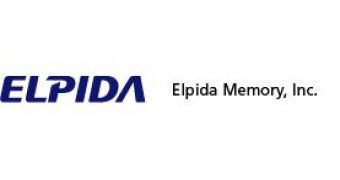Leading Japanese global distributor of DRAM Elpida Memory has been working on its first graphics double data rate random access memory module (GDDR DRAM) ever since it acquired GDDR design rights from the German company Qimonda AG in August 2009. Scheduled to enter the mass production stage in the second half of 2010, Elpida's 1-Gigabit GDDR5 memory unit, the EDW1032BABG, is the first step of this company on the GDDR market.
[Admark=1]It could be said that such a step was only natural for a developer that already mass-produced high-speed RDRAM and XDR DRAM through Rambus and that had much experience in manufacturing high-speed and high-frequency complex memory. This latest development is very convenient for the Japanese enterprise because GDDR memory is employed in multiple types of products, such as add-in graphics cards and video-game consoles, thus, a rather large market segment.
The EDW1032BABG has a 1Gb memory density and comes in two I/O configurations, namely 32Mb x32 and 64Mb x16. As Elpida's very first true success in the GDDR field, the memory module operates at the impressive clock speed of 6GHz. The GDDR production completes Elpida's range of memory types, making the developer one of the few full-range memory suppliers in the world. The company expects this “total memory solutions” approach to progressively increase its standing on the memory market.
GDDR5 products are used not only in the already-mentioned graphics processing equipment and video consoles, but also in high-performance computing platforms (HPC) employed in science and technology, physical simulation, digital-image processing and video conversion.
Although the 1Gb GDDR5 memory module won't enter mass production until the second quarter of 2010, sample shipments will become available this December, as soon as the Munich Design Center finishes testing the respective products. The likeliest candidate for mass-producing the GDDR5 is Winbond, through its Taiwanese semiconductor manufacturing facilities.

 14 DAY TRIAL //
14 DAY TRIAL //